About antelope in a gas mask and pink salt lakes

It is a saga, that is, a salt lake. His pink color is due to the small crustacean Artemia salina. These are the very devils that the flamingos eat, and this makes it pink. And here the whole saga has turned pink. Because in such a wild salt concentration no one survives except bacteria and, in fact, Artemia.
This is used by saigas. They already lack life salt in their bodies, so they come to salt marshes to lick it. And then they realize that there are no insects over these lakes, and they stay to sleep. Because in the heat of +41 it is cool there, and even nobody bites.
')

Actually, I want to tell you about saigas and where these funny animals live. But we will start with the matmodel of a paradox about why saigas become smaller if we start to destroy their natural enemies - wolves.
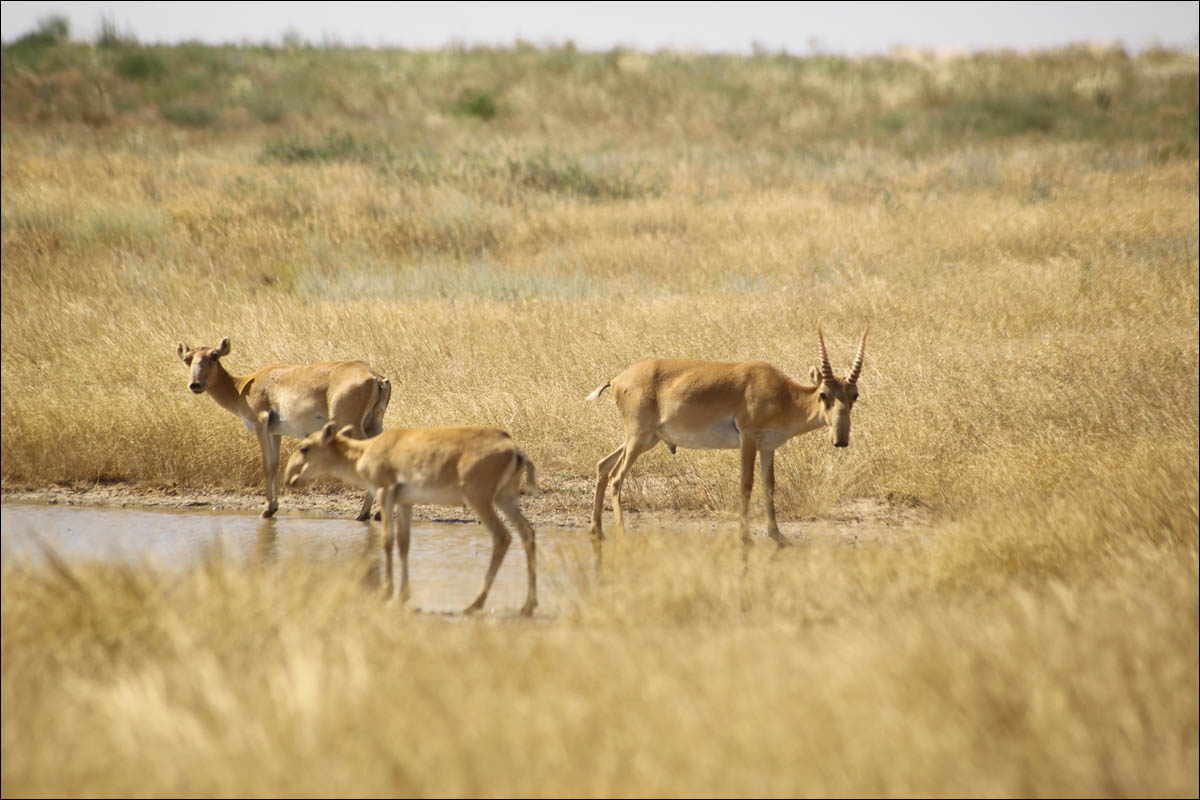
Hellish nose is needed for air purification. With the help of it, they scream, and with the help of it, they presumably determine the direction from which humid air comes, which is very important if you have to run 100 kilometers before the rain.
Model “less wolves - less saigas”
The story began in the Kaluga Zaseki reserve, where a scientific village is located in the very middle of the forest. There, the Russian scientist Jose Hernandez Blanco, specializing in wolves, drew a scheme in the snow with a stick and explained what was the matter. So, in the midst of a fierce Russian winter, I learned where to go to look at saigas. And he could not resist because he never saw them, although he was born in Astrakhan. More precisely, I saw only in the museum.
So, introductory:
1. Predator is very important to remain whole and full-featured. Reducing its effectiveness by a few percent at the expense of lameness is the inability to fully hunt. Therefore, predators avoid collisions where possible. The main ways to injure them - this is an attack on the production and fight for territory with competitors. The first is leveled by skill and luck, the second - by a bunch of evolutionary mechanisms of coexistence.
2. For wolves, protection from injury when dividing a territory is tied to the marking of their lands. A pack of wolves walks through the territory and marks the boundaries. Wolves expand like a gas, that is, they occupy all the available space. Until then, until they meet other people's signs.
These are (conditionally) interactions:

3. Saiga - the main prey of the wolf in this steppe - runs faster , right up to 70 kilometers per hour. But the wolf is stronger and smarter. The main strategy is to launch a young one from the flock to drive saigas along difficult arcs so that it becomes exhausted. It usually dries out for 10-12 kilometers. The wolves change several times, and then when the saiga begins to run slower than the leader, the leader rushes and delivers the final blow.
4. When the saiga escapes into foreign territory (for the tags of the pursuing pack, more precisely, to the area of the war of marks) it cannot be pursued by these 10-12 kilometers - it will cost more to itself. The risk of injury from a competitor neighbor is higher than the reward for catching hooves. Here is a saiga survival strategy:

5. A logical consequence: they begin to group (unconsciously, due to the settings of fearfulness) in this way, because this is the best way to escape.
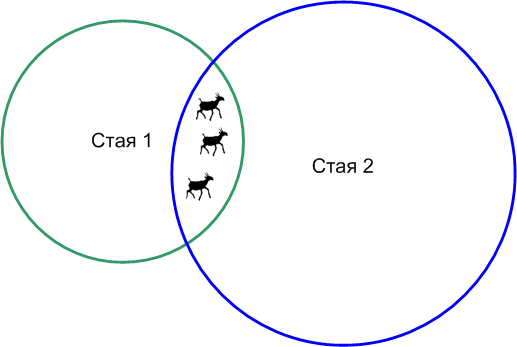
We can say that those who did not understand this or did not, were already eaten. The selection is fast, the wolf needs 10-15 kilograms every 3 days.
6. Now environmentalists are slaughtering the number of saigas and discover that their main enemy is wolves. And they decide to reduce the number of wolves. Imagine that a flock of 2 is simply destroyed. Flock 1 immediately ceases to limit itself in the pursuit radius, and the saigas discover that they cannot escape. Finite

So the destruction of a part of wolves dramatically reduces the number of saigas, as they become more accessible prey for the rest.
Who is this saiga and why should it be protected?
Saiga tatarica is a margach antelope with a very strange nose that protects the lungs from dust. Therefore, the saiga sniffs rather badly. This antelope has the most fearful settings, plus good eyesight (non-colored) and excellent hearing. The result - they detect danger from about a couple of kilometers (the size of a drone from 400 meters, the sound of a car’s door slamming from a kilometer), rise and start to run away. They have a speed of 70 kilometers per hour, there is simply nothing faster in the steppe. Even machines cannot do this, because the steppe only looks flat, but in fact consists of bumps. The saiga weighs about 20-40 kilograms (which is not enough for such a visual size), so it can change the direction of the run quickly to dodge the bushes, dimples and stones.
They eat everything in the steppe that they find from the grass. Often devour what other herbivores cannot do due to high concentrations of poisonous substances. Saigaku do not care, he does not even particularly choose food. In winter, they try to move away from the snow so as not to get the grass out from under it. And at the same time shed in white. By the way, the reserve is called “Black lands” not because of chernozem, but because there is little snow, and the steppe here even in winter does not become completely white.
The reserve and the reserve from all sides are limited by trails, shepherd points (farms) or natural barriers. There was an electric fence around a special nursery in case of the last reserve for the population, but now this small nursery has been gone since 2015. Saiga is still relatively small, and a lot of cars. They do not cross the road because they see the car very far away. If you drive at least once an hour, they get scared and run away from the road. So the fences are not needed. Plus, in winter there is food - snow in Kalmykia drops a little, and they normally feed on grass that lies in the fall. They still have abundance, but with an increase in the number of over 20 thousand, they will begin to pass across the road more actively.
It is necessary to protect it because once this build of antelope was the most adapted for Europe - approximately in the Pleistocene. The settings were so successful that the saiga almost did not change to the modern version: at least the skeletons of the modern and archaeological are almost identical. The combination of speed, fearfulness and eerie adaptability to the heat and the steppe poison of plants gave them the wildest selection award. So that they lived on the British Isles and in Siberia.
As usual, then a man came and sharply reduced the livestock. The first blow was after the collapse of the USSR, when saigas began to beat out. The story is almost like bison , they were reduced to a minimum and then gradually restored. Only bison remained less than a hundred, and several thousand saigas, though not of all kinds, either. Then there was this. I will quote Wiki :
With the collapse of the USSR, the uncontrolled mining of saigas began with the aim of exporting horns to China. According to Geo, in the period from 1990 to 2003-2006, the number of saigas in the world decreased by 94–97% - from about a million to 31–62,500 individuals.
Now the main population is out of danger. In the reserve "Black Earth" was at least 3,500 heads. That's when I went to this weekend, went to the WWF accounting, in the winter there will be a normal own accounting. Presumably, now about 7 thousand individuals.
What else is interesting in the reserve except saiga?
“Black lands” is the only testing ground in the Russian Federation for studying the steppe biome, and it is here that the saiga lives. It includes two sections: a large steppe and a water Manych-Gudilo about 340 kilometers away at the other end of the republic. The steppe area is divided into a reserve and a reserve. The reserve is a special protection and special management. The reserve is almost the same, only completely different, simpler. Thanks to ecological preservation activities of the reserve, it is possible to get to the reserve as a tourist accompanied by an employee of the reserve, and there is even limited grazing there. That is, a reserve is a zone where it is simply impossible, and a reserve is where you have to follow a bunch of rules, but you can be.
Interesting in the steppe area of the sea. Let's start with the pink salt marshes, which just look cosmic. Then I was lucky that Dmitry Dobrynin, who participated in the account, just checked the plate on the eco-path and read a small lecture about the saga. So where does the salt come from? It comes from the soil in all its surroundings, acts on the surface, and then shifts by sediments to lowlands. More precipitation - salt will blur over the territory. Slightly less precipitation - it will remain on top. And so the fertility of the land is preserved and these very salt marshes are formed.
Here you can see the terminator:
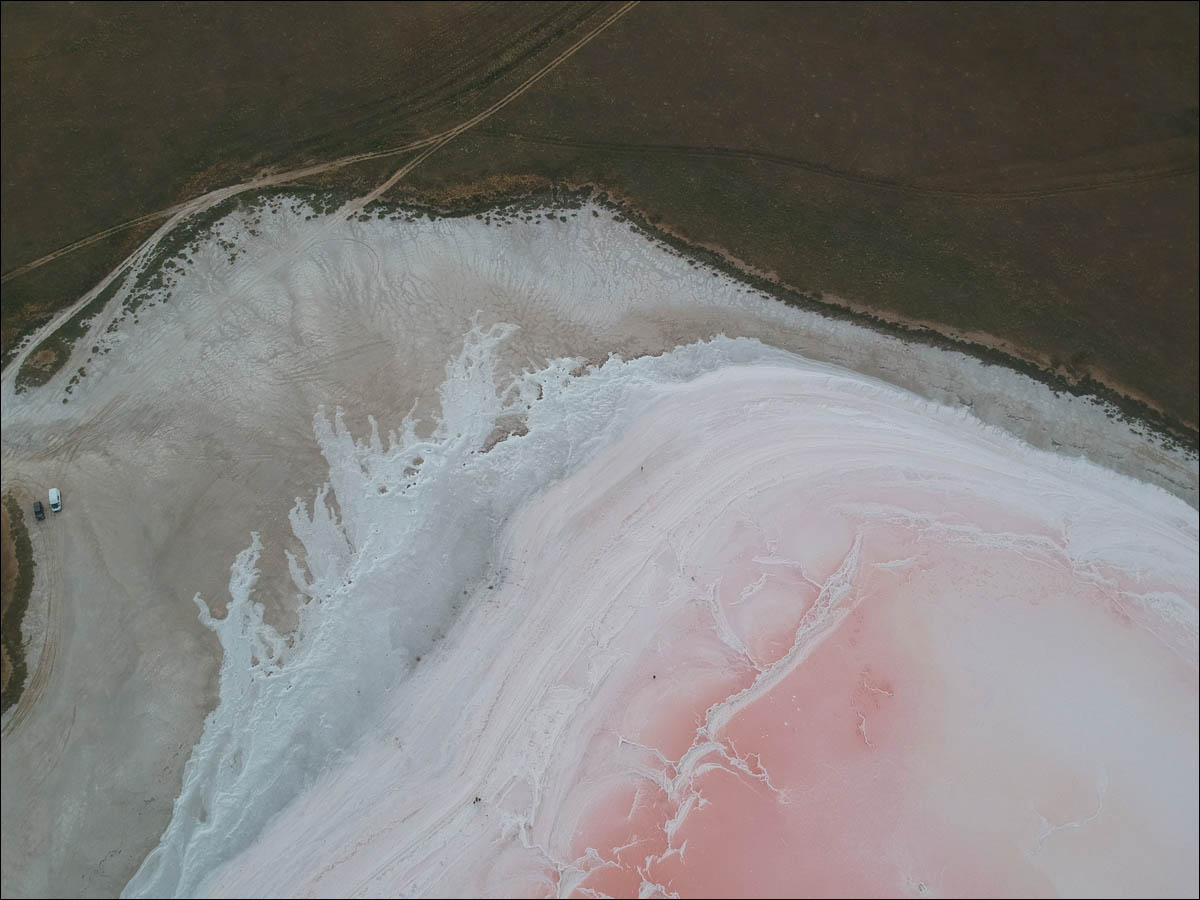
Colloidal clay simply captures salt from the water; it is the outer contour. Then there is an evaporative pool, where the salt is already deposited in a thick layer, this is the middle of the salt marsh. It turns out a large flat salt layer. Solonchak is growing, but it may be covered with earth (the last time it was after the storms), so the structure of the soil is somewhere in the spirit of a puff of salt and earth layers.
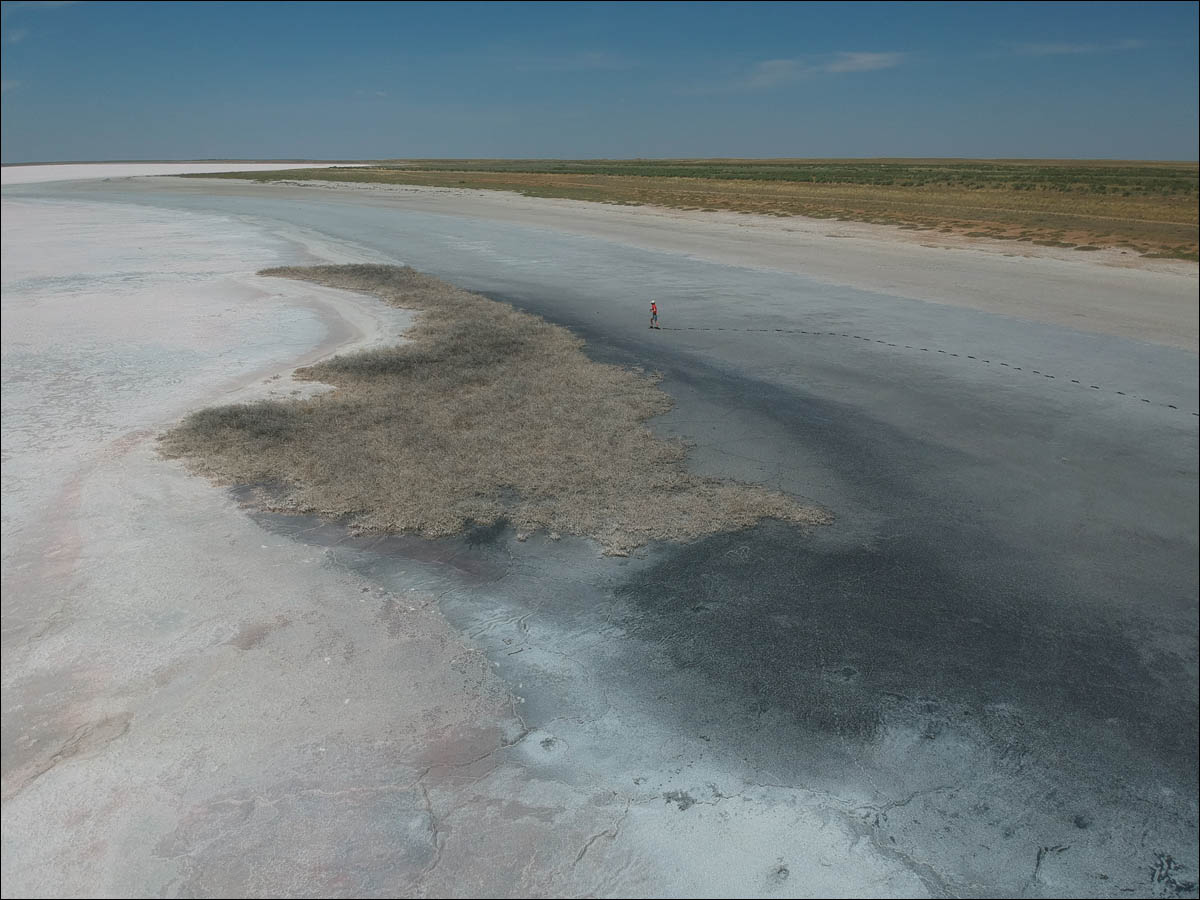
The usual saga without a wild amount of Artemia, and here more photos
This year, the young sand nodger began climbing in the salt marsh. This is the same snake that can crawl in the upper layer of sand like a submarine. It seems that they are accustomed to go to the other side for some food in the border layer to salt, but with the growth of the population they began to “cut off” across the lake. The result is salt poisoning somewhere on the third of the way. Since this is a hypothesis, the staff of the reserve, when passing by this saga, stop, gather strollers along the edges of the lake (in the middle it is useless even if they are alive) and put it on the grass. If the hypothesis is correct - it is a natural limiter of the population. If not - you need to save the snakes, and they save, as it turns out.

The reserve has several skradkov and photo traps. Slices are needed for saigas to become accustomed to an inimitable object, and scientists can hide behind them and in them. Or tourists - on a new eco-trail (it was launched only on June 19, 2019) a couple of “fences” cost around sagas, in order to see a group of saigas trying to relax near the water at the very peak of the heat.
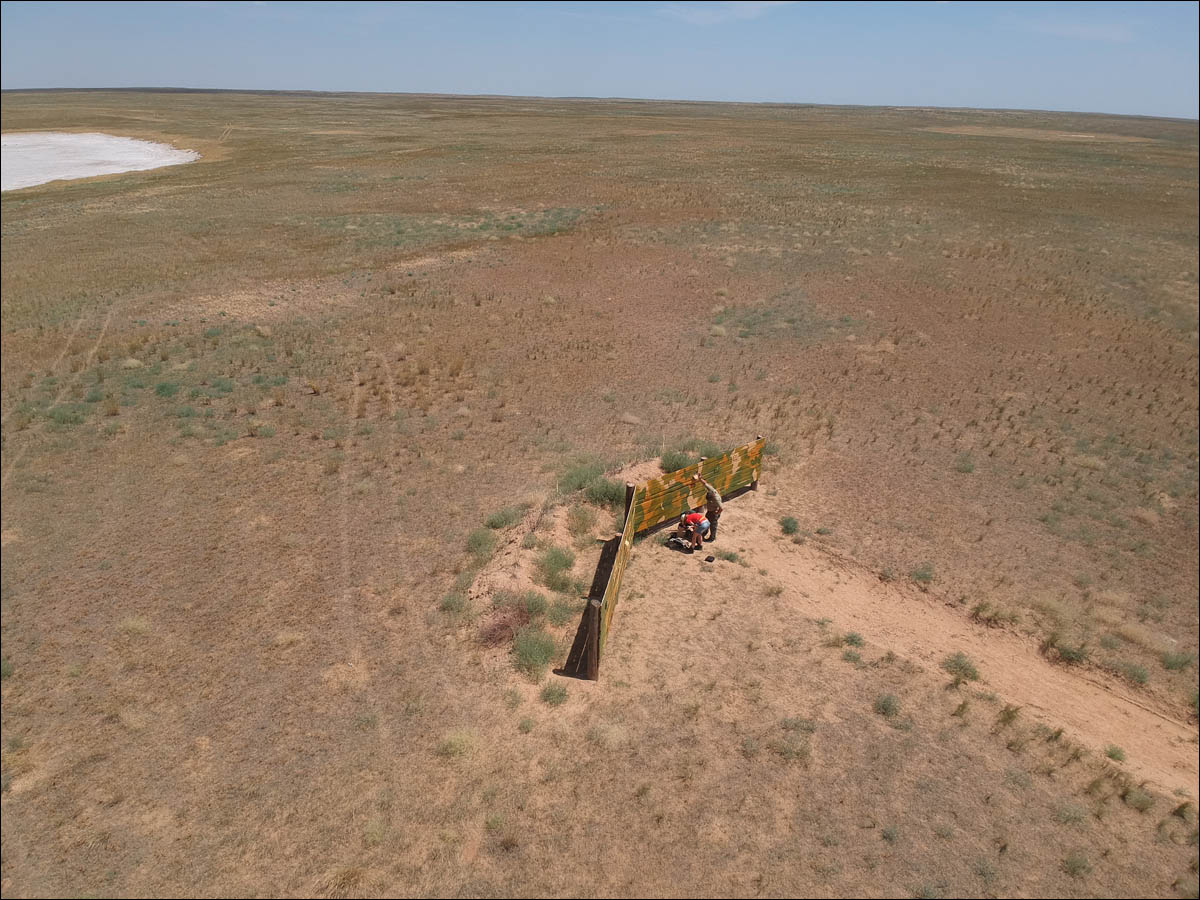
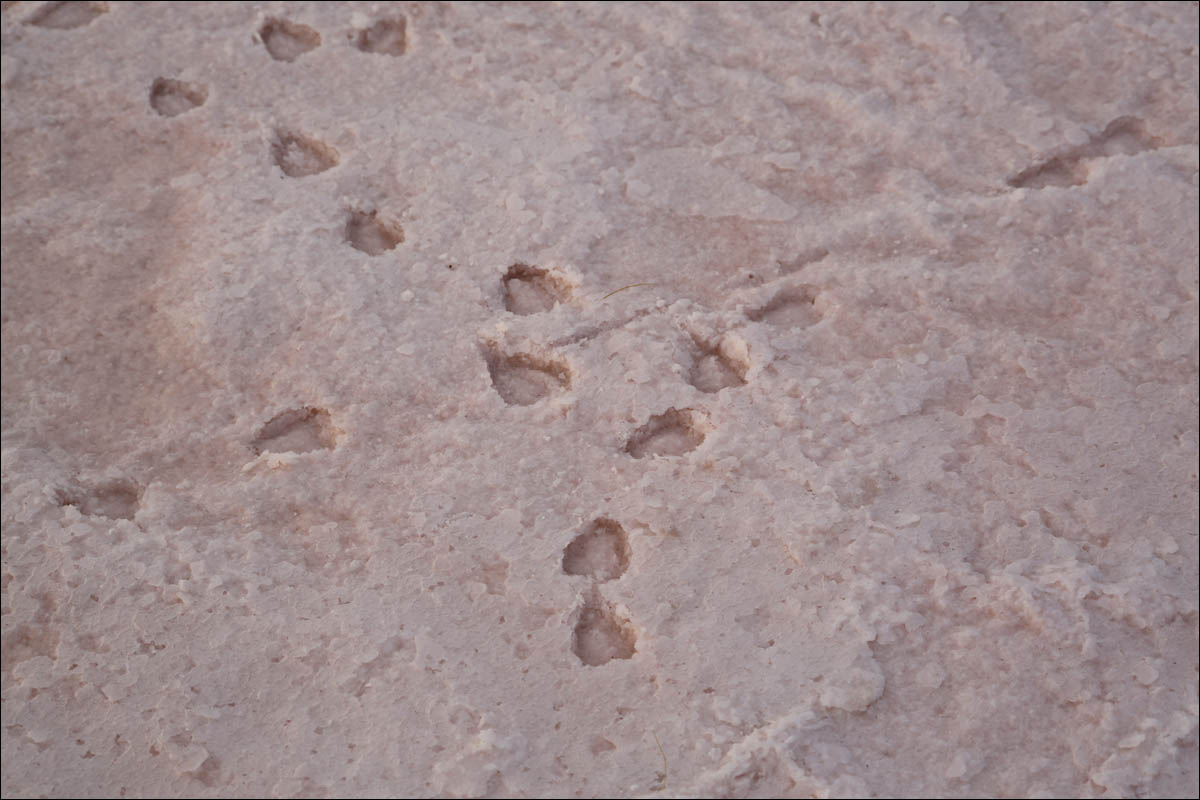
Saiga tracks in salt
But much more interesting photo traps. I was lucky that Gennady (a researcher at the reserve) came with a laptop to the cordon and began to disassemble the material. Interesting scenes there is just the sea. For example, they have a moment where an economic wolf comes to the watering place at night. He puts the saiga leg neatly, drinks it, then also takes the leg in the same way and leaves.
The trap writes video and sound when moving with rollers for 15 seconds. That is, if the movement continues, the recording goes on. Then Gennady selects valuable for science, and the environmental survey from them takes something for social networks (only a couple percent of the selection of science gets into open access). Here are some videos that they posted on their channel.
Saigas at a watering place - listen to how funny they moo (grunt). The characteristic movement of the head - it is they are very annoying insects.
Here at once dofiga everything: you can see saiga winter camouflage, you can see how they walk “diagonal”, the cameras (fixed) and another horned saiga are frightened from 0:43. By the way, about walking is an amble, about the same way an elephant can walk. Most likely, this is from a very old firmware movement on four legs.
Great video from the trap with the wolf. Even here, antelopes eat clay to collect the missing minerals in the body.
If you have another two minutes zalipat, here's another cool trap.
The trap triggers more rain, tumbleweed spheres and rolling crucifers, birds and a bunch of other movements. Traps often show how animals behave, and this gives an excellent ethological material.
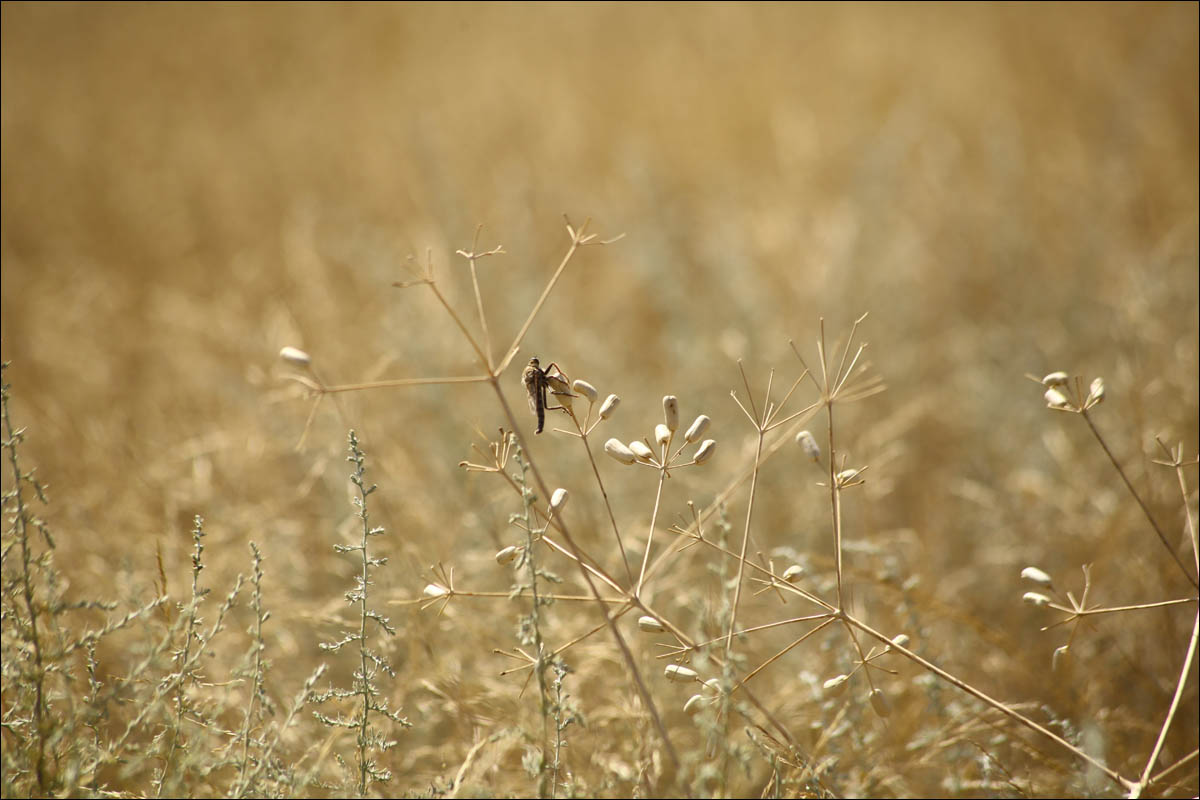
For example, they have a video, like a duck peganka, flying away from the nest, goes to wash. She does this almost in a panic, incredibly quickly and very worried about the abandoned chicks.
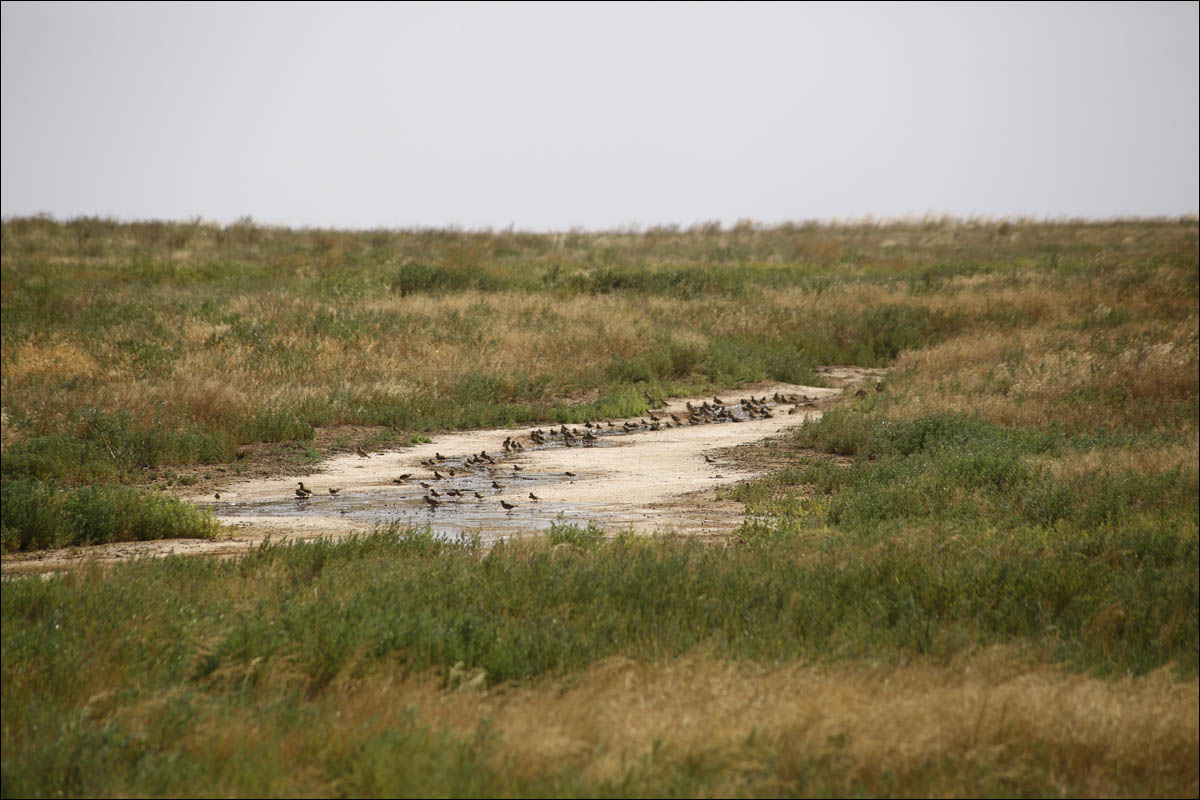

Or the wolf has dug a hole - a wolf's drinker. They in the steppe feel the scent of the place where the groundwater abuts, and make a “hole”. But this is not a hole, but a passage to the water, at the bottom of this approximately half-meter hole, a small puddle is obtained. They drink from there. A trap near the drinker - and here is another pile of valuable material.
Waterpot traps are generally Klondike. There is a Soviet artesian well, which simply raises water upward in a small stream. Around conditionally fresh lake at the top (the water is salty, but suitable for drinking), respectively, and there all come.

Skradok near the watering place, you can see the pipe with water for this mini-lake
Foxes drink cautiously. Wolves and eagles surely. Badger makes everything funny. And so on. Here in the range of crazy hedgehogs, gophers, ferrets and many more. By the way, yes. Gophers dig holes in which the saiga can damage the leg. It is clear that this almost immediately becomes the breakfast of the wolf, but sometimes the staff have time to help with a fracture or dislocation. For example, Inspector Evr once saw a saiga on three legs and gave him first aid. And at the same time he gave a nickname. Whether the Tripod is still alive, no one knows, because either the leg has healed or it has been eaten, and it is difficult to remember them all in the face.
The worst in the Black Lands is the dobiralovo. There is a terribly inconvenient scheme, when you have to leave Astrakhan or Elista in the morning, go to Yashkul by bus (2-3 hours), then by local taxi or hitchhiking 39 kilometers to Adyk, and there you are already met by a UAZ. Now, it seems, there is an opportunity to take small groups directly from Yashkul, it changes a lot. Alternative - you can rent something with not very low ground clearance (for primer) and put it right on the shepherd's point near the cordon, warning the shepherd. The locals of the villages are traveling with a stop, and in general, quite successfully. Here is the site of the reserve , where there are telephones and everything is described in more detail.
Here Sergey and Gennady - a science. They checked the facts of the post and clarified the size of the population. Behind the guys are kibitska, which was brought for the celebration of the opening of ecotrail. Now it is just a background, it is not used at all. Pay attention, judging by the shirt Zamponauke, in the reserve there are elephant elephants:
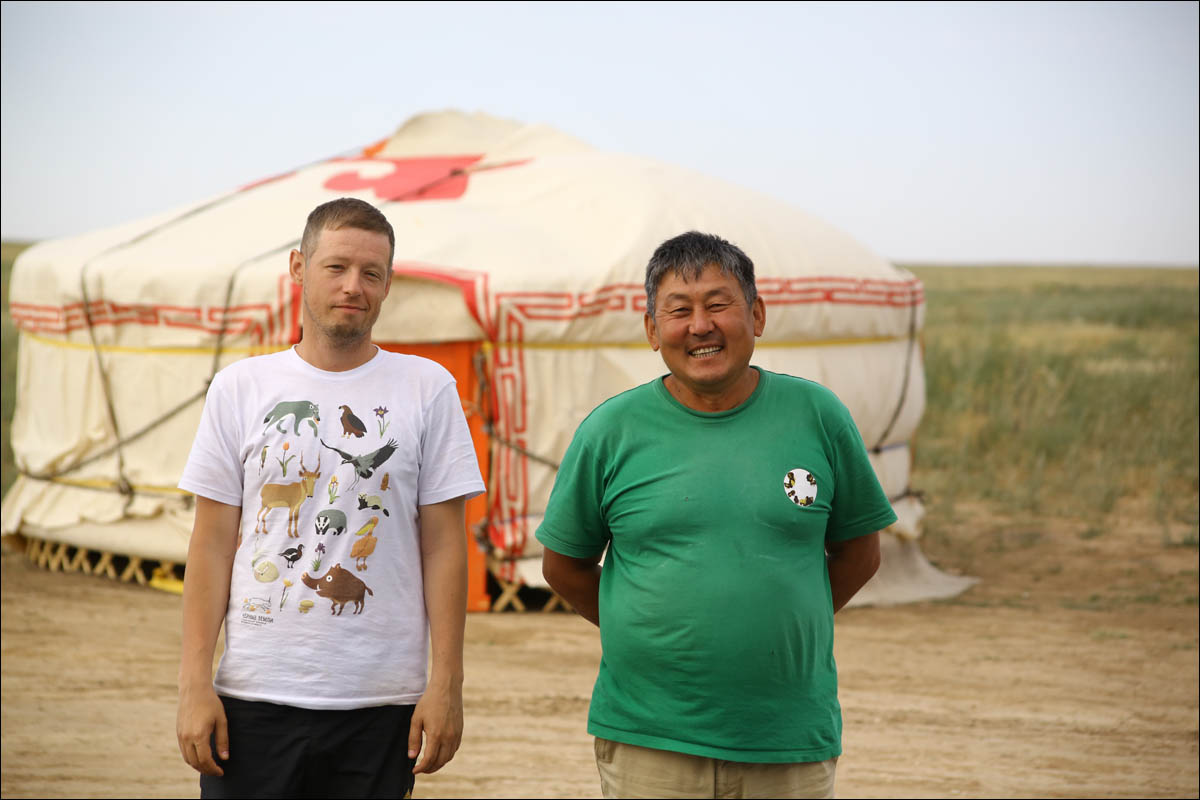
One of the bases inside the reserve is the cordon Ozerny:

At the cordon you can spend the night in the house, there is a shower and a gravity-type toilet, a refrigerator, a stove with a balloon, a well and a kettle. Powered by solar panels, wind turbine and battery. At night, the battery runs out, the cordon is cut down until the morning, and if you wander in the steppe, you will be lost as a nefig. Because there was no cellular repeater, there were no visual landmarks, and as a result, the only bright romantic lighthouse on the whole steppe was the cordon. One group was already lost, but there were experienced people there: they just sat in the steppe and sat until morning. There is almost nothing particularly dangerous in the reserve: poisonous snakes to the north, wolves are very afraid of people, the only thing is a standard set of spiders, including karakurt. Closer to Adyk there are riding camels , they can insult you if you ask for it. Taking into account the temperatures of the surrounding steppe in the summer, this is a straight martian base in miniature. And move better on the rovers from the domestic auto industry. Although, again, there is one hiking route, and in the evening it is quite pleasant to walk on it.
If you are going to the reserve, then know that the saiga is easiest to see more or less closely here in the summer in the heat when it is resting on salt lakes. In May there is a calving, it is better not to go. In winter, it will be necessary to sit for a long time in skradki (and now, too, if you want 15-20 meters, and for a long time - this is to go to the secret at 3:40 in the morning, and get out at about 16:00 of the day). April 10-15, the steppe blooms with tulips and explodes with greens, this is a very important and beautiful moment in general in any steppe biome. Gophers wake up from hibernation in late February, then lie back in late May. Those who did not have time to devour a lot can wake up in the fall. A big jerboa wakes up in March, but it's pretty hard to see, you have to watch at night. You should take binoculars or a telephoto lens with you. And prepare for survival in the heat +41 in the shade. Only with a shadow problem, the nearest tree is 30 kilometers from the reserve.
Source: https://habr.com/ru/post/457646/
All Articles